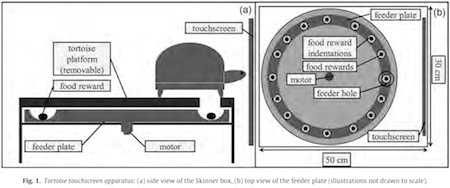Marc Abrahams's Blog, page 388
July 30, 2014
The case for medical fist bumping, then and now
Last year, 2013, medical researchers at West Virginia University published the study “Reducing pathogen transmission in a hospital setting. Handshake verses fist bump: a pilot study,” P.A. Ghareeb, T. Bourlai, W. Dutton, W.T. McClellan, Journal of Hospital Infection, vol. 85, no. 4, December 2013, pp. 321–323 (epub September 19, 2013). (We mentioned that here then.) That study says:
Handshaking is a known vector for bacterial transmission between individuals…. We have determined that implementing the fist bump in the healthcare setting may further reduce bacterial transmission between healthcare providers by reducing contact time and total surface area exposed when compared with the standard handshake.
This year, 2014, researchers at Aberystwyth University, Ceredigion, UK, published a study: “The fist bump: A more hygienic alternative to the handshake,” Sara Mela, David E. Whitworth, American Journal of Infection Control, vol. 42, 2014, pp. 916-7. The new study says:
We developed an experimental model to assay transfer of bacteria during greeting exchange, and show that transfer is dramatically reduced when engaging in alternative so-called dap greetings known as the high five and fist bump compared with a traditional handshake. Adoption of the fist bump as a greeting could substantially reduce the transmission of infectious disease between individuals.
The 2014 study does not cite the 2013 study. It’s yet another example of how medical knowledge can travel slowly, if at all.
The new study includes some near-poetic language, especially in this passage:
An experimental model and assay for bacterial transmission via physical contact was developed using standard microbiologic methods. A greeting donor immersed a sterile-gloved hand into a dense culture (2.4 � 109 CFU/mL) of nonpathogenic Escherichia coli and allowed a film of bacteria to dry onto the glove. A greeting was then exchanged with a sterile-gloved recipient.
The two co-authors cooperated in the making of a short educational video:
(Thanks to Ig Nobel Prize winner Mahadevan, and several other investigators, for bringing the new study to our attention.)
Fear of flying (amongst pilots)
 Although there are a good number of academic papers which examine ‘fear of flying’, [recent example] the number of scholarly dissertations which cover ‘fear of flying’ amongst a specific subset of air travellers â viz. pilots – is very low. Perhaps just one.
Although there are a good number of academic papers which examine ‘fear of flying’, [recent example] the number of scholarly dissertations which cover ‘fear of flying’ amongst a specific subset of air travellers â viz. pilots – is very low. Perhaps just one.
May we recommend the work of aviation practitioner, aviation historian, aviation philosopher, author and lecturer, Andrew Beniger – whose treatise : ‘Significant role of civilizations on fear of flying amongst flight deck’ was presented at the International Civil Aviation Organization’s 3rd World Conference on Fear of Flying, Montreal, 2007

July 29, 2014
Beginning of a new epidemic of penile amputations?
A disputed penile amputation in Alabama, USA, faintly echoes an epidemic of penile amputations that happened in the 1970s in Thailand. WVTM television in Birmingham, Alabama, reports:
Attorney for doctors sued in penis amputation lawsuit seeks dismissal, calls case ‘baseless, irresponsible’
BIRMINGHAM, AL -Â Court documents filed today call into question allegations surrounding the amputation of a Birmingham manâs penis last month. The attorney representing the doctors sued in the case has filed for dismissal after testimonies reveal that neither performed a circumcision on the patient.
The lawsuit was filed July 22, 2014 and alleged that while in for a circumcision procedure that the plaintiffâs penis was amputated without his consent or explanation as to why it occurred….
The 2013 Ig Nobel Prize for public health was awarded to Kasian Bhanganada, Tu Chayavatana, Chumporn Pongnumkul, Anunt Tonmukayakul, Piyasakol Sakolsatayadorn, Krit Komaratal, and Henry Wilde, for the medical techniques described in their report “Surgical Management of an Epidemic of Penile Amputations in Siam” â techniques which they recommend, except in cases where the amputated penis had been partially eaten by a duck. [REFERENCE: "Surgical Management of an Epidemic of Penile Amputations in Siam," by Kasian Bhanganada, Tu Chayavatana, Chumporn Pongnumkul, Anunt Tonmukayakul, Piyasakol Sakolsatayadorn, Krit Komaratal, and Henry Wilde, American Journal of Surgery, 1983, no. 146, pp. 376-382.] At the Ig Nobel ceremony, Nobel laureate Eric Maskin read aloud the acceptance speech sent by the winners, who were unable to travel to Harvard.
BONUS: It is generally believed that, directly or indirectly, publicity about the Thai epidemic inspired the 1993 events in the United States that came to be known as “the Bobbitt case.”
UPDATE (July 30): Investigator Ivan Oransky alerts us to a newly published study:
“Penile Prostheses and the Litigious Patient: A Legal Database Review,” Peter L. Sunaryo, Marc Colaco and Ryan Terlecki [pictured here], Journal of Sexual Medicine, epub July 29, 2014. The authors are at Rutgers New Jersey Medical School and Wake Forest School of Medicine. They examined 40 cases:
“There were 23 (57.5%) cases that were found in favor of the defendant, while 17 (42.5%) cases led to indemnity payment to the plaintiff including two cases (5.0%) that were settled out of court and 15 (37.5%) favoring the plaintiff in front of a jury. The mean settlement received was $335,500 compared with the mean indemnity award of $831,050 for verdicts decided in favor of the plaintiff (Pâ=â0.68). The most common breach of duty was error in surgical decision making, present in 20 cases (48.8%). Informed consent was an issue in 13 filings (31.7%), and postoperative infection was seen in 13 cases (31.7%). In cases that identified the type of implant used, 58.3% were malleable implants, and 41.7% were inflatable devices.”

Like sound-cancelling headphones, kinda sorta, for odors
If you know how noise-cancelling headphones work, you may have wondered whether the same kind of technical trick â producing your own vibrations that exactly cancel out the ânoiseâ vibrations â might somehow work with smells. Twin-brother scientists Kush and Lav Varshney spent some time noodling on that notion. (Thanks to Martin Gardiner for telling me about the Varshneys.)
Kush (now at IBM, formerly at MIT) and Lav (now at the University of Illinois, formerly at IBM, and before that at MIT) have just presented a paper at a scientific conference â the IEEE International Workshop on Statistical Signal Processing â in Australia.
They call their somewhat-refined idea âactive odor cancellationâ….
âso begins another Improbable Innovation nugget, which appears in its entirety on BetaBoston.

Pseudoaccomodation in Pseudophakes
If you’ve kept up with the literature about pseudophakes, you are probably already familiar with the study by Plotkinov and friends:
“Objective assessment of pseudoaccommodation in pseudophakia” [article in Russian], I.A. Plotnikov, V. M. Sheludenko, and N. P. Narbut, Vestnik oftalmologii, vol. 123, no. 6 (2006): 35-37.
BONUS: Also from the year 2006, Tarek Abd El-Basset El-Naggar’s “Pseudoaccommodation in pseudophakia” [thesis section].
BONUS: A measure of the excitement that had built during the subsequent year: 2007′s “High expectations in pseudophakes fueling expansion in laser vision correction base“.
 (Thanks to investigator Ivan Oransky for bringing this to our attention.)

The tortoise and the touchscreen
 Ig Nobel Prize winners Anna Wilkinson [pictured here, with a tortoise] and Ludwig Huber have now done an experiment with four tortoises and a touchscreen. (Wilkinson and Huber, together with colleagues Natalie Sebanz and Isabella Mandl, were awarded the 2011 Ig Nobel Prize for physiology, for their study “No Evidence of Contagious Yawning in the Red-Footed Tortoise.”)
Ig Nobel Prize winners Anna Wilkinson [pictured here, with a tortoise] and Ludwig Huber have now done an experiment with four tortoises and a touchscreen. (Wilkinson and Huber, together with colleagues Natalie Sebanz and Isabella Mandl, were awarded the 2011 Ig Nobel Prize for physiology, for their study “No Evidence of Contagious Yawning in the Red-Footed Tortoise.”)
The new study is: “Touchscreen performance and knowledge transfer in the red-footed tortoise (Chelonoidis carbonaria),” Julia Mueller-Paul, Anna Wilkinson, Ulrike Aust, Michael Steurer, Geoffrey Hall, Ludwig Huber, Behavioural Processes, vol. 106, July 2014, pp. 187â192. The authors, at the University of Vienna, Austria, the University of Lincoln, UK, the University of York, York, and theUniversity of New South Wales, Sydney, Australia, report:
The present study investigated the ability of the tortoise to learn a spatial task in which the response required was simply to touch a stimulus presented in a given position on a touchscreen…. Four red-footed tortoises learned to operate the touchscreen apparatus… The results show that red-footed tortoises are able to operate a touchscreen and can successfully solve a spatial two-choice task inthis apparatus….
Four juvenile red-footed tortoises (Chelonoidiscarbonariaâformerly Geochelone) with plastron lengths of 13 cm(Esme), 13 cm (Molly), 12 cm (Quinn) and 11 cm (Emily), took part in the study. The tortoisesâ sex was unknown, as unambiguous sexual dimorphism develops only later in the life of this species.


Progress in Automatic Flirtation Detection
âDetecting human social meaning is a difficult task for automatic conversational understanding systems.â – explain a research team [pictured] based at Stanford University, who have investigated the viabilities of an automatic flirtation detector.
âOur flirtation detection system uses prosodic, dialogue, and lexical features to detect a speakerâs intent to flirt with up to 71.5% accuracy [...]â
The high figures suggest that their system can predict flirtation intention even better than people can – humans can only manage to predict flirtation intention with 56.2% accuracy – it’s claimed.
See: Ranganath, Rajesh, Dan Jurafsky and Daniel A. McFarland, 2009. âItâs Not You, Itâs Me: Detecting Flirting and Its Misperception in Speed-Dates.â Empirical Methods on Natural Language Processing (EMNLP, 2009, Singapore). Session 3A (Theatre): ‘Discourse and Dialogue’.
Also see: Development of the Flirting Styles Inventory (2010)
Note: Previous academic work on automatic detection of human social intentions via speech analysis has focussed on annoyance, anger, sadness, or boredom [Ang et al., 2002; Lee and Narayanan, 2002; Liscombe et al., 2003], speaker characteristics such as charisma [Rosenberg and Hirschberg, 2005], personality features like extroversion or agreeability [Mairesse et al., 2007; Mairesse and Walker, 2008], speaker depression or stress [Rude et al., 2004; Pennebaker and Lay, 2002; Cohn et al., 2004], and dating willingness or liking [Madan et al., 2005; Pentland, 2005] ).

To deal with climate change… make people smaller
 The plan to engineer a shorter, smaller human race to cope with climate change is almost as big and bold as the schemes of people working to convince themselves climate change won’t affect them.
The plan to engineer a shorter, smaller human race to cope with climate change is almost as big and bold as the schemes of people working to convince themselves climate change won’t affect them.
The plan, at this point still sketchy, has three engineers. S Matthew Liao [pictured here] is a professor of bioethics at New York University. Anders Sandberg and Rebecca Roache are fellows who study ethics at the University of Oxford. The trio launched their “be-littler” idea in a paper called “Human engineering and climate change“, in 2012 in the journal Ethics, Policy and the Environment.
—So begins another Improbable Research column in The Guardian.
BONUS [unrelated]: “Schoolgirl ‘beheaded classmate because she wanted to dissect someone’“
To deal with climate change⦠make people smaller
 The plan to engineer a shorter, smaller human race to cope with climate change is almost as big and bold as the schemes of people working to convince themselves climate change won’t affect them.
The plan to engineer a shorter, smaller human race to cope with climate change is almost as big and bold as the schemes of people working to convince themselves climate change won’t affect them.
The plan, at this point still sketchy, has three engineers. S Matthew Liao [pictured here] is a professor of bioethics at New York University. Anders Sandberg and Rebecca Roache are fellows who study ethics at the University of Oxford. The trio launched their “be-littler” idea in a paper called “Human engineering and climate change“, in 2012 in the journal Ethics, Policy and the Environment.
âSo begins another Improbable Research column in The Guardian.
BONUS [unrelated]: “Schoolgirl ‘beheaded classmate because she wanted to dissect someone’“

July 28, 2014
Sexual appliances have subclass, says the Patent Office
âSEXUAL APPLIANCEâ is the official name of the US Patent and Trademark Officeâs Class 600, Subclass 38. Class 600, the broad-ranging general class of which Subclass 38 is a mere part, is for inventions that, in the view of the patent office, have to do with âSURGERYâ.
Innovation, as seen by the Patent Office, does not happen willy-nilly. Innovation happens in the real world. In the real world, there are always constraints….
âso begins another Improbable Innovation nugget, which appears in its entirety on BetaBoston.

Marc Abrahams's Blog
- Marc Abrahams's profile
- 14 followers




